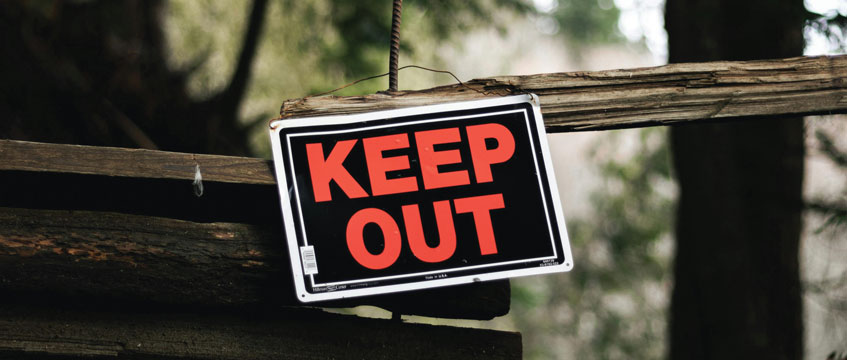Key points
- An interruption of rights accruing under the Prescription Act 1832 requires submission to or acquiescence in an obstruction, for a year
- Signs must be examined in their context. What does a sign convey to the user?
Hot on the heels of Nicholson and another v Hale and another [2024] UKUT 153 (LC); [2024] PLSCS 112, the Upper Tribunal (Lands Chamber) has decided Sagier v Kaur [2024] UKUT 217 (LC); [2024] PLSCS 141, another case which considers the impact of signs on the acquisition of rights of way.
The background
Barratt Homes completed a housing development adjoining Victoria Park in Smethwick, west of Birmingham, in 1999. The development included nine new houses situated on a new private road adjacent to the park which connected two existing public roads.
The private road was the succession of driveways to the houses over which neighbours had to walk or drive to get from their homes to the public highway at each end. It was never adopted and remained private land. The parties owned properties on the private road.
At the residents’ request, to prevent the private road being used as a cut-through from Pool Road to Victoria Park Road, Barratt erected a timber barrier from the front wall of the defendant’s property to the park railings. The barrier, which was lower than knee height, prevented vehicles from passing from one end of the private road to the other, but was low enough to enable able-bodied pedestrians to step over it and for cycles, prams and pushchairs to be lifted over it.
Pedestrians made regular use of the private road to access facilities to the east of the park, which included a school, community centre, doctor’s surgery and shops as well as the park itself.
Signs and barriers
The timber barrier was not obvious to drivers and it did not limit where pedestrians could walk. Consequently, in 2000, residents put up two signs on the park railings, at one end of the private road and adjacent to the timber barrier, stating “no public right of way”. The signs were frequently removed and were replaced periodically up to 2005.
In 2000/2001, some residents replaced the timber barrier with a waist-height metal fence in the same position, which was high enough to prevent anyone stepping over it. The new fence stopped around two metres short of the railings so access remained for pedestrians over the original timber barrier.
In September 2020, the defendant and her husband blocked the gap between the metal fence and the railings with a picket fence to prevent pedestrians using it. In 2021, they replaced all the fencing with a much higher metal fence impossible to jump or climb over.
In December 2020, the claimant sought to register a right of way over the defendant’s driveway, on foot, since 1999.
The law
Rights over land belonging to another may be acquired as a result of long use as follows:
- At common law Proof that use commenced before 1189 is sufficient, but the passage of time has now made this impossible.
- Inference of a lost modern grant A presumed grant which is fictional but binding where it is proved that use has been enjoyed without objection, not secretly or with the owner’s permission, for a period of 20 years at any time.
- The Prescription Act 1832 This provides for the acquisition of rights on the same principles as lost modern grant where they have been enjoyed without interruption for 20 years ending when proceedings claiming or disputing such rights are commenced. Only an act or matter submitted to or acquiesced in for a year following notice is deemed to be an interruption.
The person claiming the right must establish that the use relied on took place openly and, provided they do so, there is an evidential presumption that the enjoyment has been of right and without permission or contention. It is then for the owner to show that the use was contentious to defeat the presumption.
Suitably-worded signs seen by would-be peaceable users of the land are sufficient to render such use contentious (Taylor v Betterment Properties (Weymouth) Ltd and another [2012] EWCA Civ 250).
The fundamental question is what the notice conveys to the user. If the user knew or ought to have known that the owner objected to use of the land, the notice is effective to render use contentious.
The decisions
The First-tier Tribunal was satisfied that the claimant had established sufficient long use. However, a claim under the 1832 Act failed because use ceased in September 2020 prior to issue of the claim in December 2020. At least one oral protest by the defendant’s husband in late September 2020 and the presence of the signs for the period 2000-2005 rendered use of the defendant’s drive contentious so the inference of a lost modern grant also failed.
The Upper Tribunal allowed the claimant’s appeal. The judge was wrong to dismiss the claim under the 1832 Act since interruptions for less than a year do not count. The installation of the picket fence in September 2020 did not stop time running and use continued to the commencement of proceedings.
The confrontation between the claimant and the defendant’s husband occurred after satisfaction of the 20-year period so could not be relevant. As for the signs, the reasonable user would have assumed neither Barratt nor those installing the metal fence in 2000/2001 intended to prevent all pedestrian access.
The signs were targeted at members of the “public” not householders and neighbours living on a private road, a door or two away. They were ambiguous and so insufficient to render use contentious.
Louise Clark is a property law consultant and mediator









